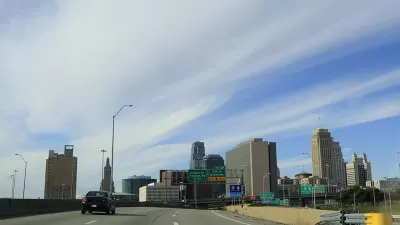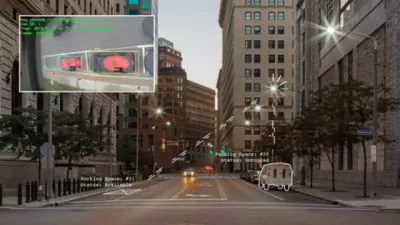Technology is infiltrating every aspect of our lives, but, according to this article, we shouldn't underestimate the nefarious role it plays in urban spaces.

"The 'smart city' is not a coherent concept, let alone an actually existing entity. It’s better understood as a misleading euphemism for a corporately controlled urban future," argues Jathan Sadowski. The grand visions of the connected city are part of a narrative created by corporate interests to convince planners, city officials, and the public that the challenges facing cities can be solved through the adoption of omnipresent technological systems.
But the smart city is really the captured city, says Sadowski, where collection of data and surveillance of physical space are prevalent. Urban policing is one example of how the private sector runs the show from behind the scenes:
The most powerful upgrades to urban surveillance used to come primarily from the Departments of Defense and Homeland Security, but today, corporations like Amazon roll out systems that the FBI and CIA would have literally killed to install. (Now they can just pay a monthly fee for access.) Amazon’s networked doorbell camera Ring and its associated Neighbors app are an example.
Sadowski believes some people will creatively resist the totalitarianism of social and technological infrastructure of the captured city, but a meaningful resistance will need go further. "It will require us to target with ruthless criticism the producers and users of surveillance systems, the supply and demand for urban control. It will require us to know our enemies and name them as such."
FULL STORY: The Captured City

Planetizen Federal Action Tracker
A weekly monitor of how Trump’s orders and actions are impacting planners and planning in America.

Maui's Vacation Rental Debate Turns Ugly
Verbal attacks, misinformation campaigns and fistfights plague a high-stakes debate to convert thousands of vacation rentals into long-term housing.

Restaurant Patios Were a Pandemic Win — Why Were They so Hard to Keep?
Social distancing requirements and changes in travel patterns prompted cities to pilot new uses for street and sidewalk space. Then it got complicated.

In California Battle of Housing vs. Environment, Housing Just Won
A new state law significantly limits the power of CEQA, an environmental review law that served as a powerful tool for blocking new development.

Boulder Eliminates Parking Minimums Citywide
Officials estimate the cost of building a single underground parking space at up to $100,000.

Orange County, Florida Adopts Largest US “Sprawl Repair” Code
The ‘Orange Code’ seeks to rectify decades of sprawl-inducing, car-oriented development.
Urban Design for Planners 1: Software Tools
This six-course series explores essential urban design concepts using open source software and equips planners with the tools they need to participate fully in the urban design process.
Planning for Universal Design
Learn the tools for implementing Universal Design in planning regulations.
Heyer Gruel & Associates PA
JM Goldson LLC
Custer County Colorado
City of Camden Redevelopment Agency
City of Astoria
Transportation Research & Education Center (TREC) at Portland State University
Jefferson Parish Government
Camden Redevelopment Agency
City of Claremont




























